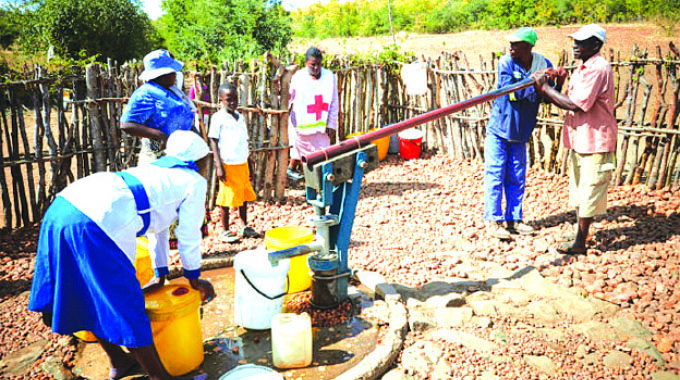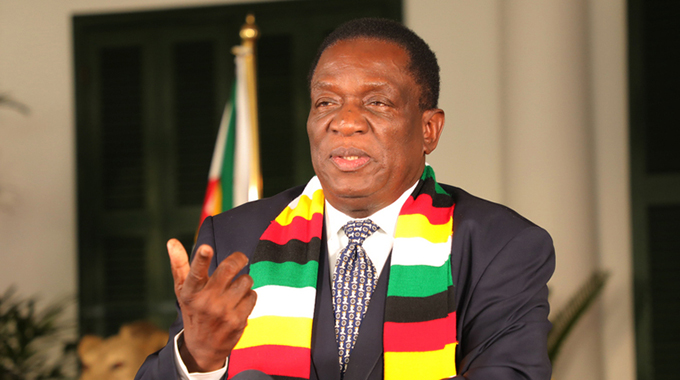Agric sector can achieve Vision 2030 before 2030

Obert Chifamba
Agri-Insight
THE time for all stakeholders in the agriculture industry to pull out all stops and make the sector’s recovery plan work and transform Vision 2030 into a reality is now!
And Government has been very clear about its position on this one – the plan just has to bear fruit.
In fact, in its few years of existence, the Second Republic has set in motion a host of programmes meant to breathe life into the agriculture sector’s fortunes and get the country’s agro-based economy ticking once again.
It is exciting to note that President Mnangagwa himself is leading the charge from the front and has since initiated many programmes under his office, which speaks volumes about the gravity of the matter at stake.
Most topical at the moment is the climate-proofed ‘Pfumvudza’ programme that has taken the sector by storm after being overwhelmingly embraced by farmers from different categories across the country.
Pfumvudza is essentially a concept to help farmers mitigate the harsh effects of drought, while allowing farmers to realise good yields from very small pieces of land to bolster food security at both household and national levels.
Food security is part of the matrix to ensure the country attains an upper middle income status by 2030.
The country has rolled out Command Agriculture, which started with focus mostly concentrated on maize, but has since been extended to cover various other farming disciplines.
In June, Vice President Constantino Chiwenga launched the Presidential heifer pass-on programme in Chipinge, which is meant to help vulnerable farmers who lost cattle to the January disease restore their herds in Manicaland and Masvingo provinces.
The scheme is part of the broader Presidential livestock inputs support programme, which was launched recently in Harare.
The initial phase will see a total of 194 heifers being distributed to farmers in Buhera district in Manicaland and Gutu district in Masvingo, who will pass on the first calves produced by the heifers to other farmers for continuity of the programme.
Another 400 heifers will be distributed to subsequent beneficiary farmers, as more heifers are made available.
VP Chiwenga unequivocally stated that the scheme was meant to contribute to food security and nutrition in line with Vision 2030.
President Mnangagwa was to later launch a piggery scheme under the Presidential Livestock Inputs Support Programme that will see beneficiaries each borrowing two sows and a boar on a free loan.
After the first litter, a beneficiary is expected to pass the pigs to the next approved person.
Essentially, the scheme will play a complementary role to other running livestock schemes covering cattle, goats, sheep, poultry and fisheries — all launched in the recent past.
Pigs are known to produce a high number of litters if they receive proper care and food, which means the scheme will offer a “quick sustainable pathway to better livelihoods for the communities”, as the President aptly put it.
A sow can have two farrowings and produce more than 20 piglets every year, and can be sent to the market at six months, so farmers can generate both revenue and cash flows quickly, while still building their herd to the most viable size.
The Agriculture Recovery Plan strategy that Government has adopted seeks to transform the agriculture sector into a US$8, 2-billion-dollar industry in five years.
The initiative was the brainchild of the late Lands, Agriculture, Water and Rural Resettlement Minister Air Chief Marshal (Rtd) Perrance Shiri.
There is also the Horticulture Recovery Plan, which is targeting 1,8 million rural households under the Presidential Horticulture Scheme, besides the traditional private sector-led conventional horticulture that is meant to give birth to an economic boom in rural Zimbabwe, especially after the approval of the US$2 billion funding for the programme.
The plan envisages the realisation of a US$1,217 billion annual rural horticulture economy by 2025, growing to US$3,5 billion by 2030 that would be equivalent to an income amounting to US$675 and US$2 000 per household by 2025 and 2030 respectively.
It is part of Government initiatives under Agriculture and Food Systems Transformation Strategy (2020-2025) to transform agriculture from a US$5,2 billion to a US$8,2 billion sector, contributing 20 per cent of GDP by 2025 in line with the vision of making Zimbabwe an upper-middle-income country by 2030.
The Presidential Horticulture Scheme will cost US$186 920 000 and cover 1,8 million rural households and will have the following components: household tree planting; village nutrition gardens; ward-based youth vegetable and horticulture gardens and orchards; schools’ vegetables and horticulture projects; main-streaming indigenous vegetables and fruits; research, development and innovation in production, processing and value addition and beneficiation; and domestic and export market development.
Over 25 000 boreholes will be sunk in all villages and schools to ensure viability and anchor sustainability, and to climate-proof the Presidential Horticulture Scheme as the country moves to create vibrant rural agro-industry 2025 that would have been established alongside a rejuvenated conventional horticulture sub-sector.
Recently, Cabinet approved the Livestock Growth Plan whose aim is to make Zimbabwe’s livestock sector a US$1, 9 billion industry by 2025.
Of course all the programmes Government has initiated to kick-start the march towards the attainment of Vision 2030 will require all stakeholders to pull in one direction and work as a team.
The idiom of a horse being taken to the river, but only drinking water if it so wishes quickly comes to mind here where Government has set the stage for citizens to start agricultural production in earnest with guidance from Agritex and other technical departments.
The ball is in the farmers’ courts now and with strict adherence to production recommendations the process of industrialisation through agriculture can be executed to fruition well ahead of the set 2030 target.
The mechanisation drive has seen tractors and combine harvesters coming in from Belarus, with some tractors being procured from John Deere.
The push to modernise irrigation through the adoption of centre pivots is also one positive development speaking volumes of Government’s serious intent to get the economy working at full throttle, with citizens enjoying an upper middle income life.
On the one hand, it would also be good for the Government and private sector to work jointly and avail cheap loans with flexible repayment terms to enable farmers to produce effectively.









Comments